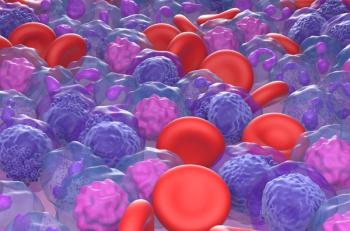
Peanut Oral Immunotherapy Extends Relief to Adults, Highlights Need for Future Research
Key Takeaways
- Peanut OIT demonstrated efficacy in desensitizing adults, with 67% achieving the daily maintenance dose and significant improvements in quality of life scores.
- Adverse events were mostly mild, with some requiring epinephrine. The study highlighted the need for further research on long term safety and efficacy.
Adults with peanut allergy experienced effective treatment with peanut oral immunotherapy but future studies are necessary to confirm and characterize safety profiles among various subgroups.
Peanut oral immunotherapy (OIT) showed promising results for adults with peanut allergy, effectively desensitizing them to peanuts and improving their quality of life (QOL), though further research is needed to fully understand long term safety and efficacy across diverse patient groups, according to a study published in
Peanut is a significant cause of food
Historically, peanut allergy management included peanut avoidance, provision of epinephrine, and education on allergic reaction management. In January 2020, the FDA approved Peanut (Arachis hypogaea) Allergen Powder-dnfp (Palforzia; Aimmune Therapeutics, Inc) for patients aged 4 to 17 years.2 The FDA extended the approval to patients 1 to 3 years old in July 2024 based on data from the POSEIDON (NCT03211247) phase 3 trial.
Palforzia, the first licensed OIT formula, helps reduce the severity of allergic reactions, including anaphylaxis, that can occur with accidental peanut exposure.3 OIT involves daily food digestion through gradually increasing doses to induce allergen desensitization and immunomodulation.1
Researchers conducted the Phase 2 Grown-Up Peanut Immunotherapy trial using a Simon’s minimax 2 stage design to test that adults with peanut allergy can be effectively and safely desensitized. A total of 21 adults were enrolled in the OIT group, including 8 women and a mean age of 24.2 years. Researchers initiated OIT among patients prior to the onset of the COVID-19 pandemic in March 2020.
A total of 67% of patients achieved the daily maintenance dose and met the primary end point. About 29% of participants withdrew from the study but it was not directly related to OIT. The mechanistic control group included 12 recruits, with 9 who completed the protocol. Researchers found no significant differences among the 2 groups.
There were 18 patients in the primary efficacy population and 21 in the intention to treat analysis. The primary end point was met by 78% of patients who tolerated at least 1.4 g peanut protein and 67% of the intention to treat population met the primary end point. The median highest tolerated dose increased from 30 mg to 3000 mg at the exit challenge, representing a 100-fold increase (P < .0001). About 56% of the primary efficacy population met the secondary end point of tolerating a cumulative dose of 4.4 g peanut protein and 48% in the intention to treat population.
One participant used epinephrine in the hospital during baseline double-blind placebo-controlled food challenge and subsequently completed the OIT protocol and achieved the primary end point. During home dosing, 3 patients self-administered epinephrine on 4 occasions.
Patients typically experienced adverse events (AEs) during dosing increments in the hospital. Researchers classified most AEs as grade 1 (95.4%) and all grade 2 AEs (4.3%) occurred during up-dosing. A single grade 4 reaction developed while a participant ran after a 1000 mg maintenance dose.
Researchers conducted follow-up skin prick test titration on all 15 participants who completed the trial protocol and controls. Significant reductions were linked with OIT in wheal size elicited by undiluted peanut skin prick test extract (median reduction, 2.5 mm) and with 1:10 (3.5 mm reduction), 1:100 (4 mm reduction) and 1:1000 (3 mm reduction) dilutions (P < .001). Researchers observed a small but significant reduction in the control group at the 1:10 (1.8 mm reduction; P < .05) dilution over the same time, but not at other concentrations.
Participants undergoing OIT demonstrated post-treatment increases in peanut-and Arachis hypogaea 2-specific Immunoglobulin G. Researchers observed no changes in specific Immunoglobulin E (IgE) and in the control group, no changes were seen during a similar time frame.
There were 5 out of 21 patients who were IgE-sensitized to Arachis hypogaea allergen 8 (Ara h 8). About 60% of participants sensitized to Ara h 8 experienced local symptoms at any point during OIT vs 67% of non-sensitized participants.
QOL scores improved significantly at the time of exit double-blind placebo-controlled food challenge (mean difference, –1.7 out of total score of 7; P < .001) and these improvements remained sustainable after a 3 month follow-up of dosing compared with pre-OIT.
Food neophobia scores showed significant improvements (mean reduction of 1.4 out of total score of 7; P < .001) as did food situations scores (increase of 1.5 out of total score of 5; P < .001) as well. The primary efficacy population demonstrated highly significant results for all 3 parameters.
Potential bias in the Simon’s minimax design limited the study results. Additionally, patients were primarily White, and researchers need to further evaluate reasons for the lack of diversity in trial participation. Lastly, the study did not address the longer effects of OIT, like whether desensitization can be maintained without daily peanut consumption after several years of consistent OIT.
“Larger studies will be required to further characterize the safety profile and identify the group of adult patients most likely to benefit with the minimum risk of systemic adverse reactions, and also if OIT has the potential to lead to long-term tolerance in this age group,” study authors concluded.
References
1. Hunter H, Ue KL, Cornelius V, et al. Oral immunotherapy in peanut-allergic adults using real-world materials. Allergy. Published online April 23, 2025. doi:10.1111/all.16493
2. Gallagher A. FDA extends Palforzia approval to children 1 to 3 years old with peanut allergy. Pharmacy Times®. July 30, 2024. Accessed June 2, 2025.
3. Palforzia (Peanut (Arachis hypogaea) Allergen Powder-dnfp) FDA approval history. Drugs.com. July 29, 2024. Accessed June 2, 2025.
Newsletter
Stay ahead of policy, cost, and value—subscribe to AJMC for expert insights at the intersection of clinical care and health economics.













































